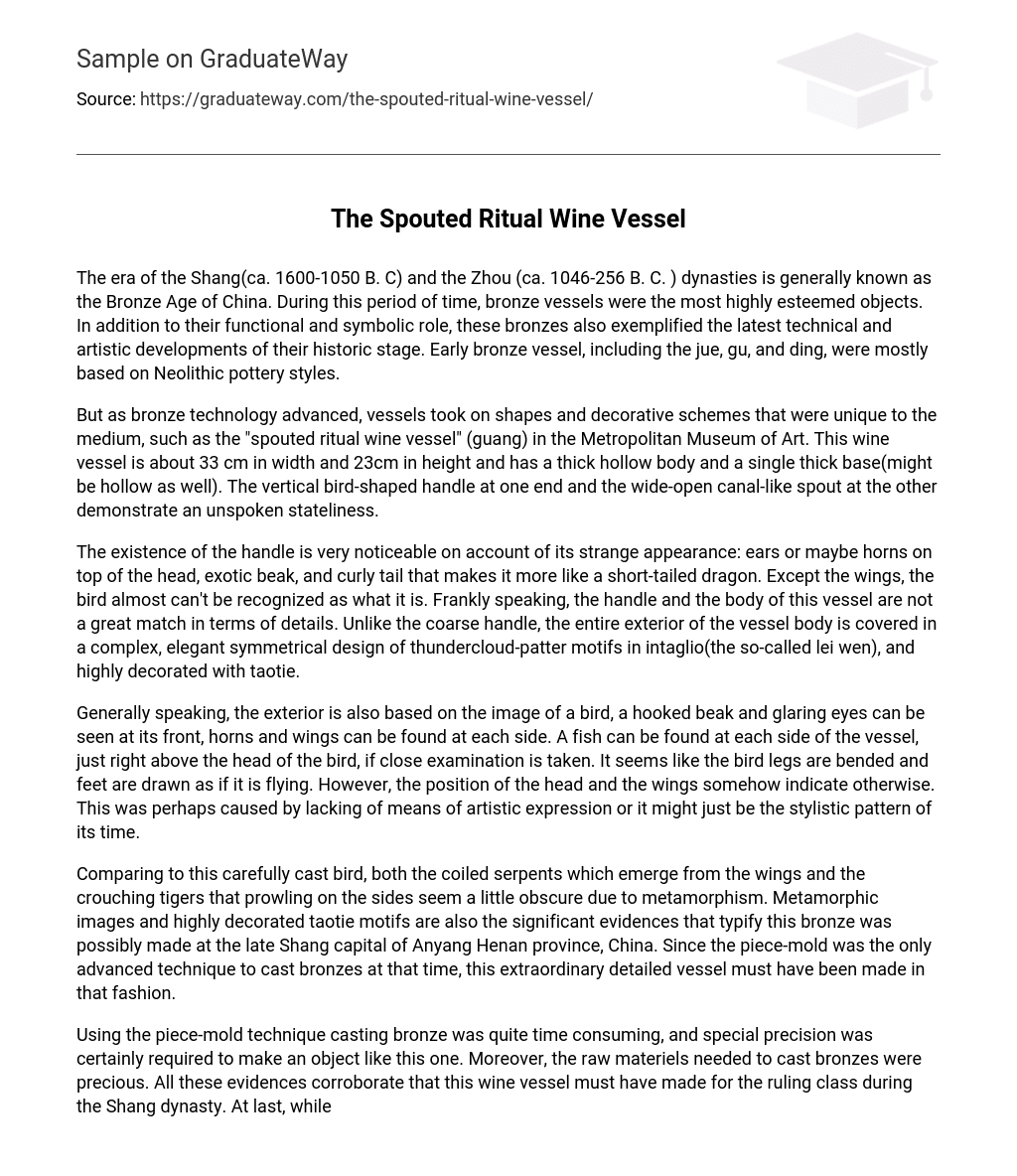The era of the Shang(ca. 1600-1050 B. C) and the Zhou (ca. 1046-256 B. C. ) dynasties is generally known as the Bronze Age of China. During this period of time, bronze vessels were the most highly esteemed objects. In addition to their functional and symbolic role, these bronzes also exemplified the latest technical and artistic developments of their historic stage. Early bronze vessel, including the jue, gu, and ding, were mostly based on Neolithic pottery styles.
But as bronze technology advanced, vessels took on shapes and decorative schemes that were unique to the medium, such as the “spouted ritual wine vessel” (guang) in the Metropolitan Museum of Art. This wine vessel is about 33 cm in width and 23cm in height and has a thick hollow body and a single thick base(might be hollow as well). The vertical bird-shaped handle at one end and the wide-open canal-like spout at the other demonstrate an unspoken stateliness.
The existence of the handle is very noticeable on account of its strange appearance: ears or maybe horns on top of the head, exotic beak, and curly tail that makes it more like a short-tailed dragon. Except the wings, the bird almost can’t be recognized as what it is. Frankly speaking, the handle and the body of this vessel are not a great match in terms of details. Unlike the coarse handle, the entire exterior of the vessel body is covered in a complex, elegant symmetrical design of thundercloud-patter motifs in intaglio(the so-called lei wen), and highly decorated with taotie.
Generally speaking, the exterior is also based on the image of a bird, a hooked beak and glaring eyes can be seen at its front, horns and wings can be found at each side. A fish can be found at each side of the vessel, just right above the head of the bird, if close examination is taken. It seems like the bird legs are bended and feet are drawn as if it is flying. However, the position of the head and the wings somehow indicate otherwise. This was perhaps caused by lacking of means of artistic expression or it might just be the stylistic pattern of its time.
Comparing to this carefully cast bird, both the coiled serpents which emerge from the wings and the crouching tigers that prowling on the sides seem a little obscure due to metamorphism. Metamorphic images and highly decorated taotie motifs are also the significant evidences that typify this bronze was possibly made at the late Shang capital of Anyang Henan province, China. Since the piece-mold was the only advanced technique to cast bronzes at that time, this extraordinary detailed vessel must have been made in that fashion.
Using the piece-mold technique casting bronze was quite time consuming, and special precision was certainly required to make an object like this one. Moreover, the raw materiels needed to cast bronzes were precious. All these evidences corroborate that this wine vessel must have made for the ruling class during the Shang dynasty. At last, while this vessel was made from bronze and it is fairly heavy, it couldn’t be used in everyday life. Therefore, this ritual wine vessel would only be used in ceremonies linking to the rulers of the Shang dynasty.





